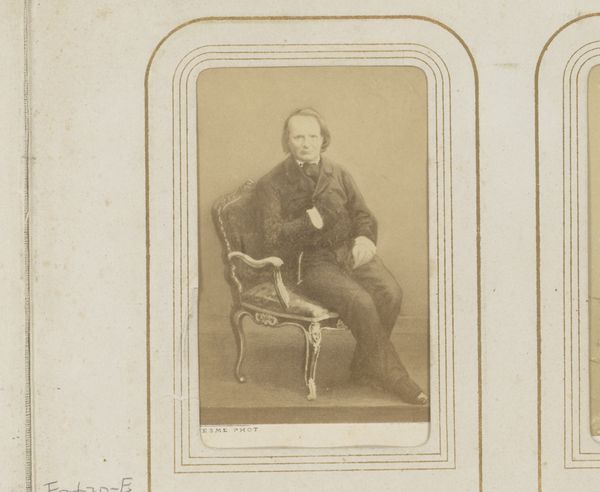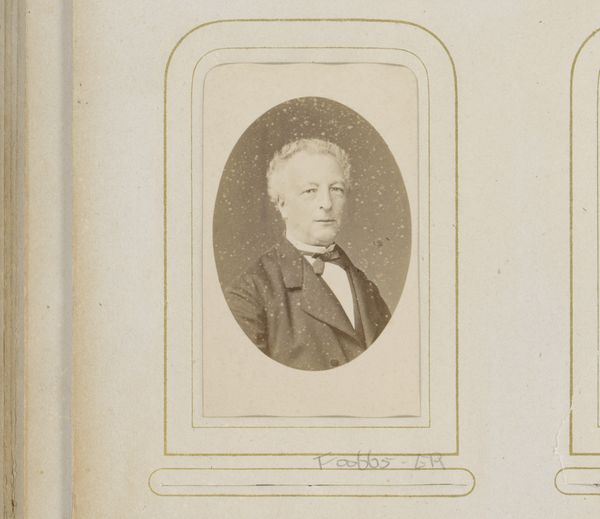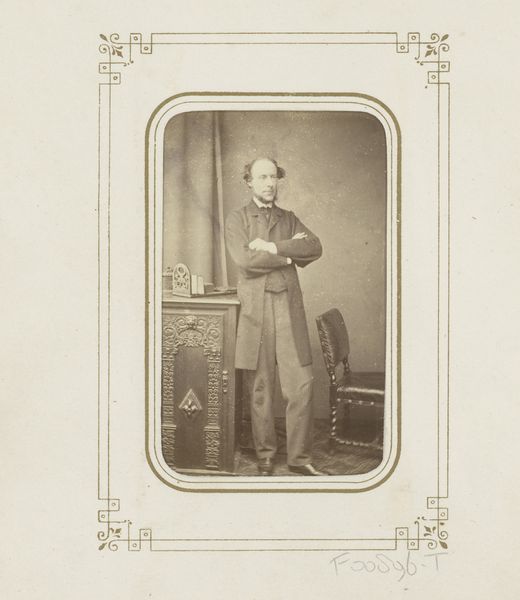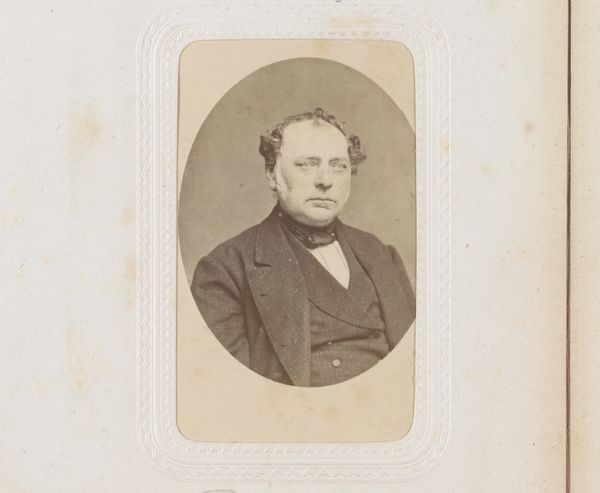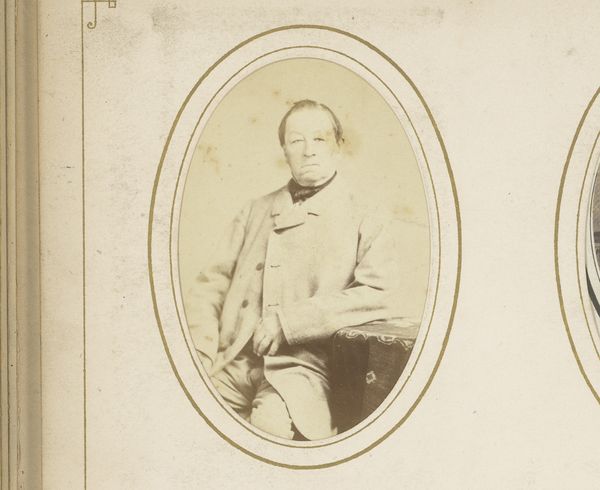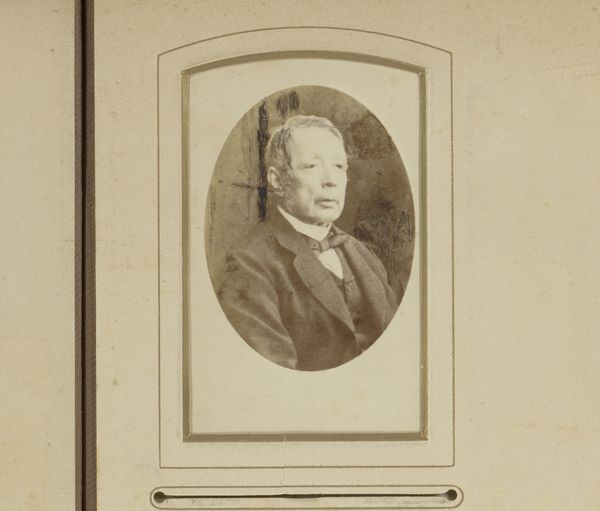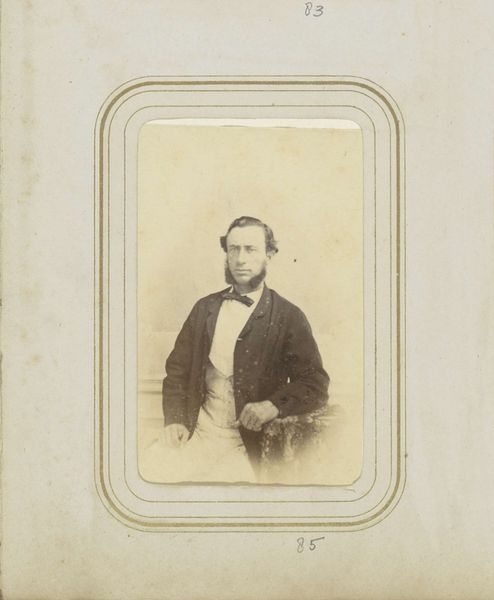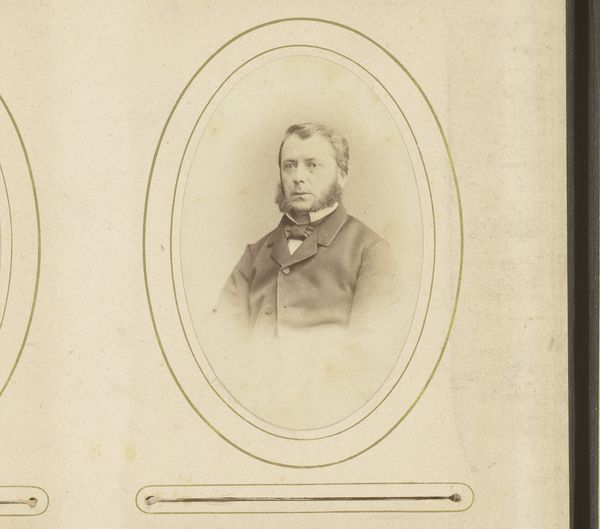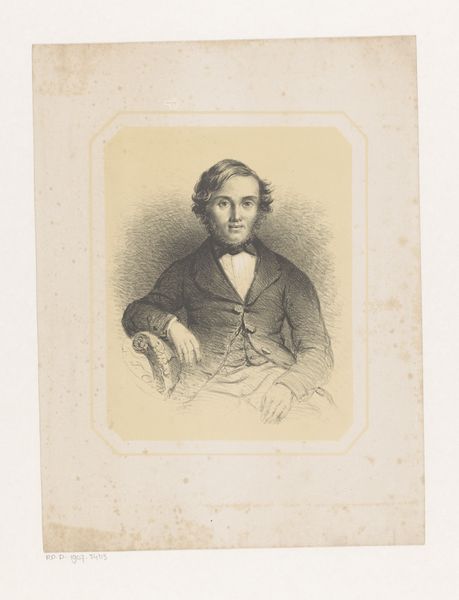
photography
#
portrait
#
photography
#
historical photography
#
19th century
#
realism
Dimensions: height 82 mm, width 50 mm
Copyright: Rijks Museum: Open Domain
Editor: Here we have "Portrait of a Seated Man with Sideburns" by Kasparus Karsen, created sometime between 1850 and 1896. It's a photograph, and there's something so compelling about seeing this man from so long ago. What do you see in this piece, especially considering the context of photographic processes at the time? Curator: Well, looking at the materiality is key. Think about the shift this represents: suddenly, portraiture isn’t just for the elite who can afford a painter. Photography democratized image production. How do we interpret this accessibility in terms of class and representation? Editor: That's interesting. I hadn't really thought about photography as a kind of commodity being made more available. So, is the focus on realism in this style just a reflection of the materials and methods available at the time? Curator: It's more complex than that. The quest for realism speaks to broader cultural values about truth and objectivity, values that were being heavily shaped by industrialization and scientific advancement. The photograph, seemingly objective, plays into this. But let’s not forget the labour involved. What kind of studio was Karsen operating, and who was employed in making these portraits? Editor: So it's not just the final image, but the whole apparatus behind its production that tells a story. I suppose I often forget to think about what *making* this image entailed, especially because now we have photography on our phones. Curator: Exactly. Consider the subject, too. The clothing, the pose—these details reflect certain aspirations, perhaps towards respectability or upward mobility, made newly accessible through photographic representation and its associated consumption patterns. What does the materiality of his attire suggest about access to material goods at the time? Editor: This has given me a whole new perspective! Thinking about it as not just art, but about materials and social context makes so much more sense. Curator: Absolutely, understanding art through its material conditions helps us see its role in shaping social realities.
Comments
No comments
Be the first to comment and join the conversation on the ultimate creative platform.

